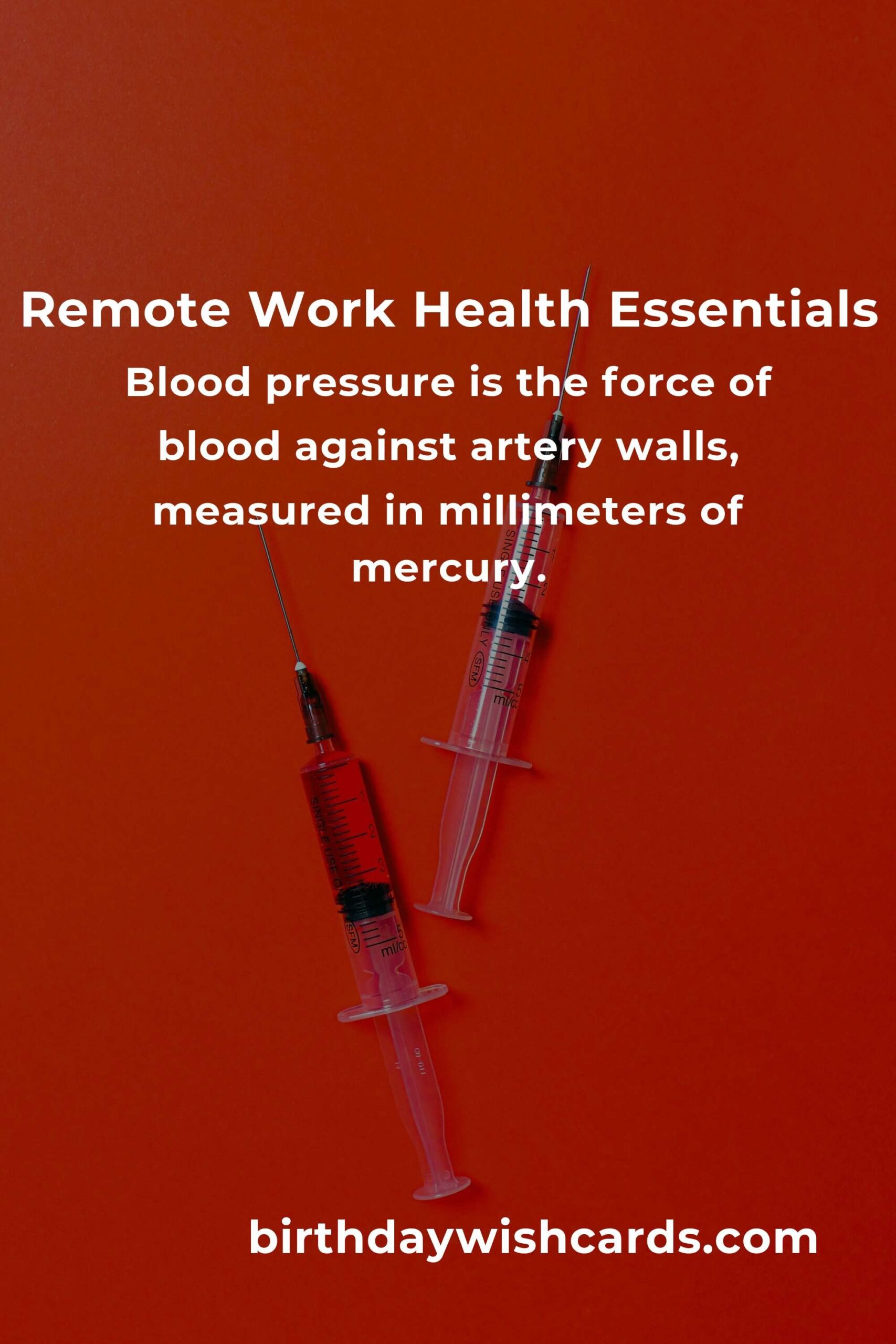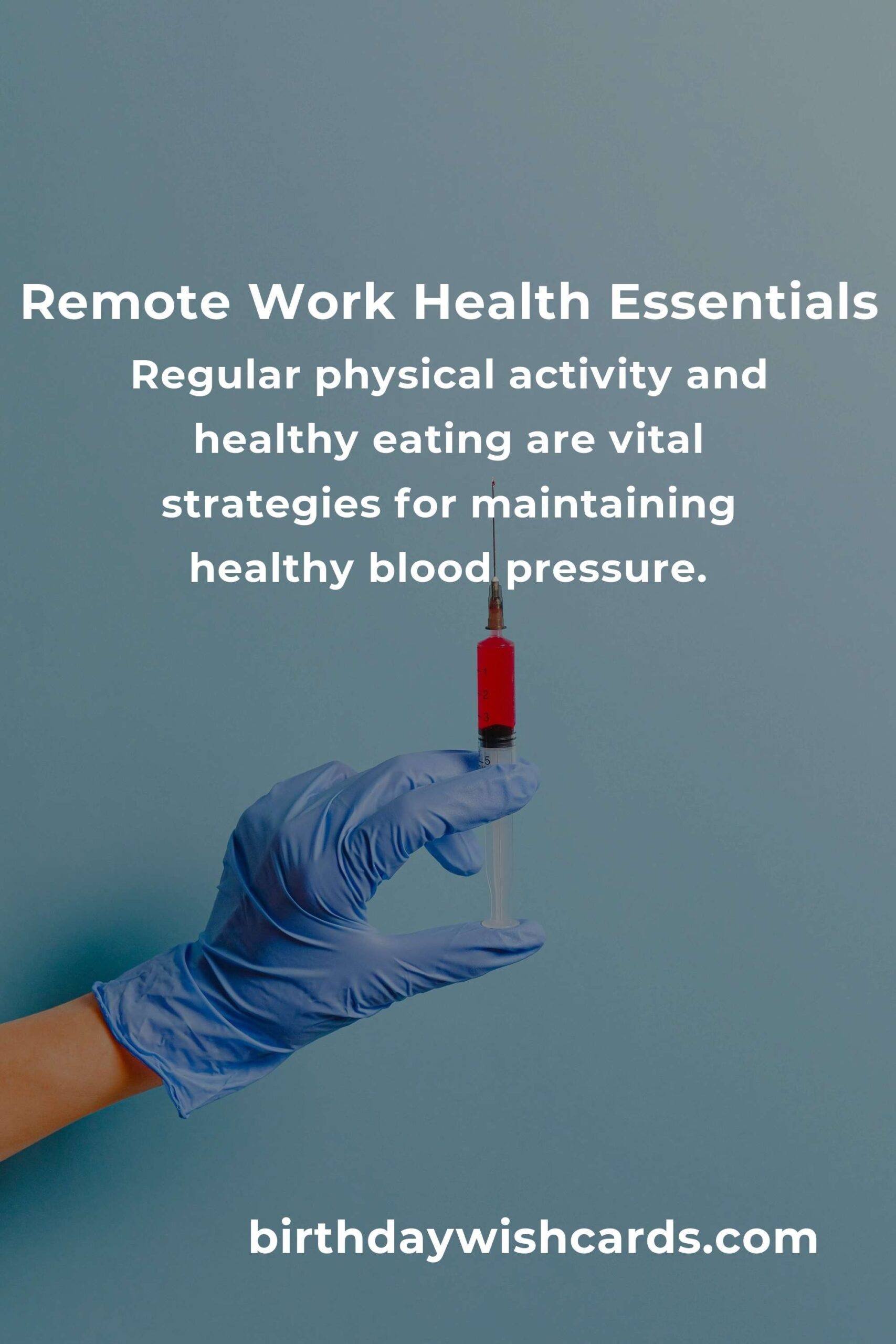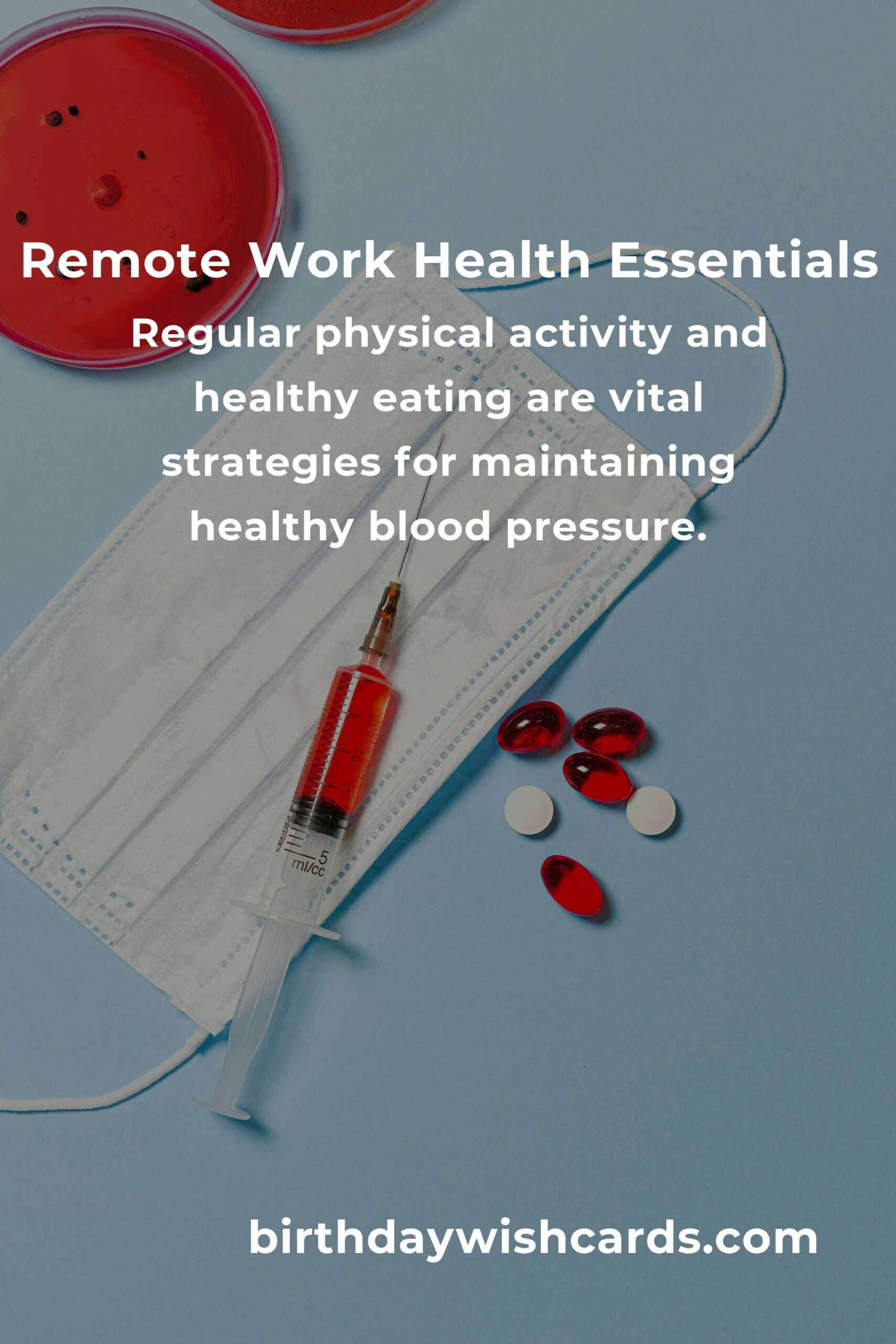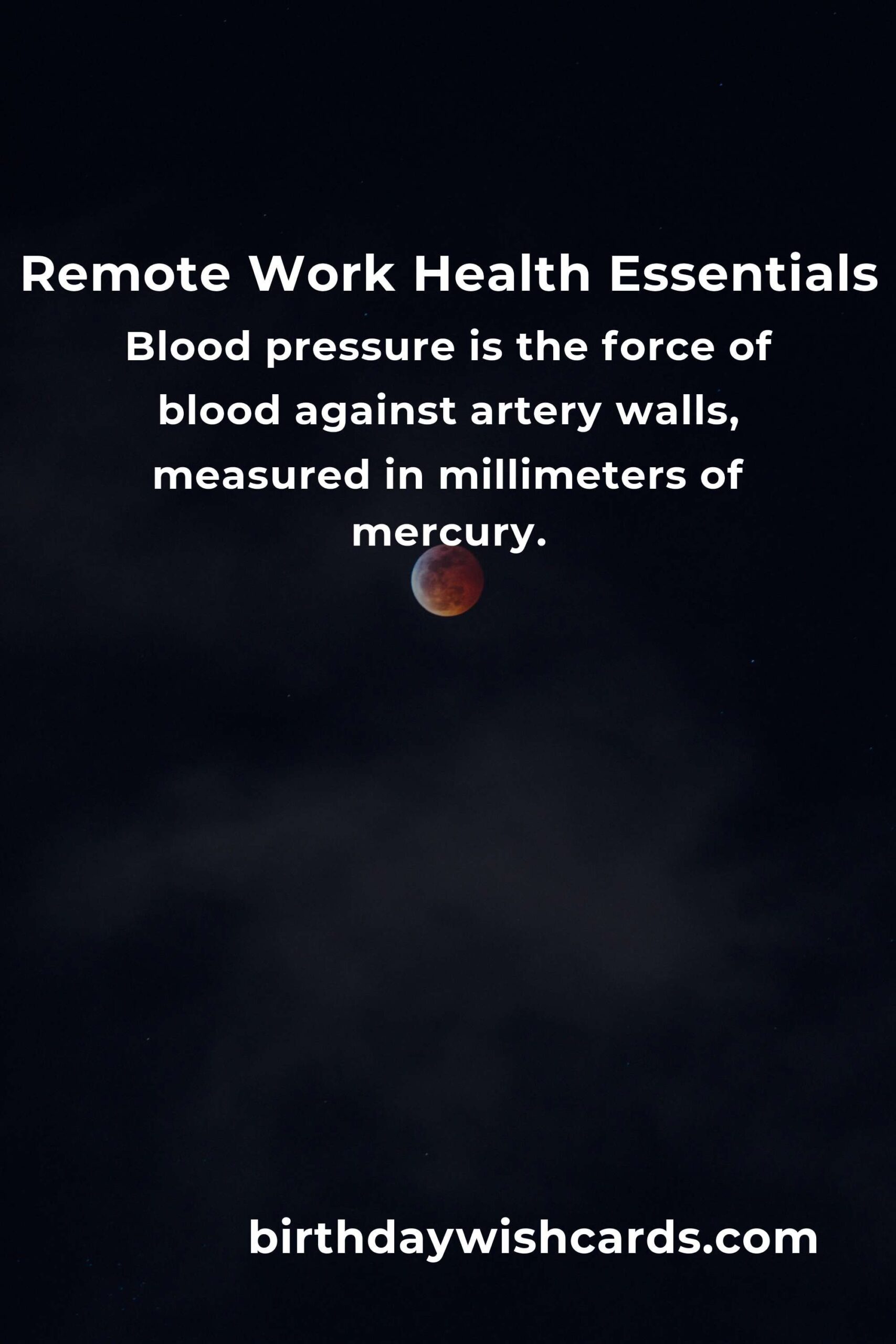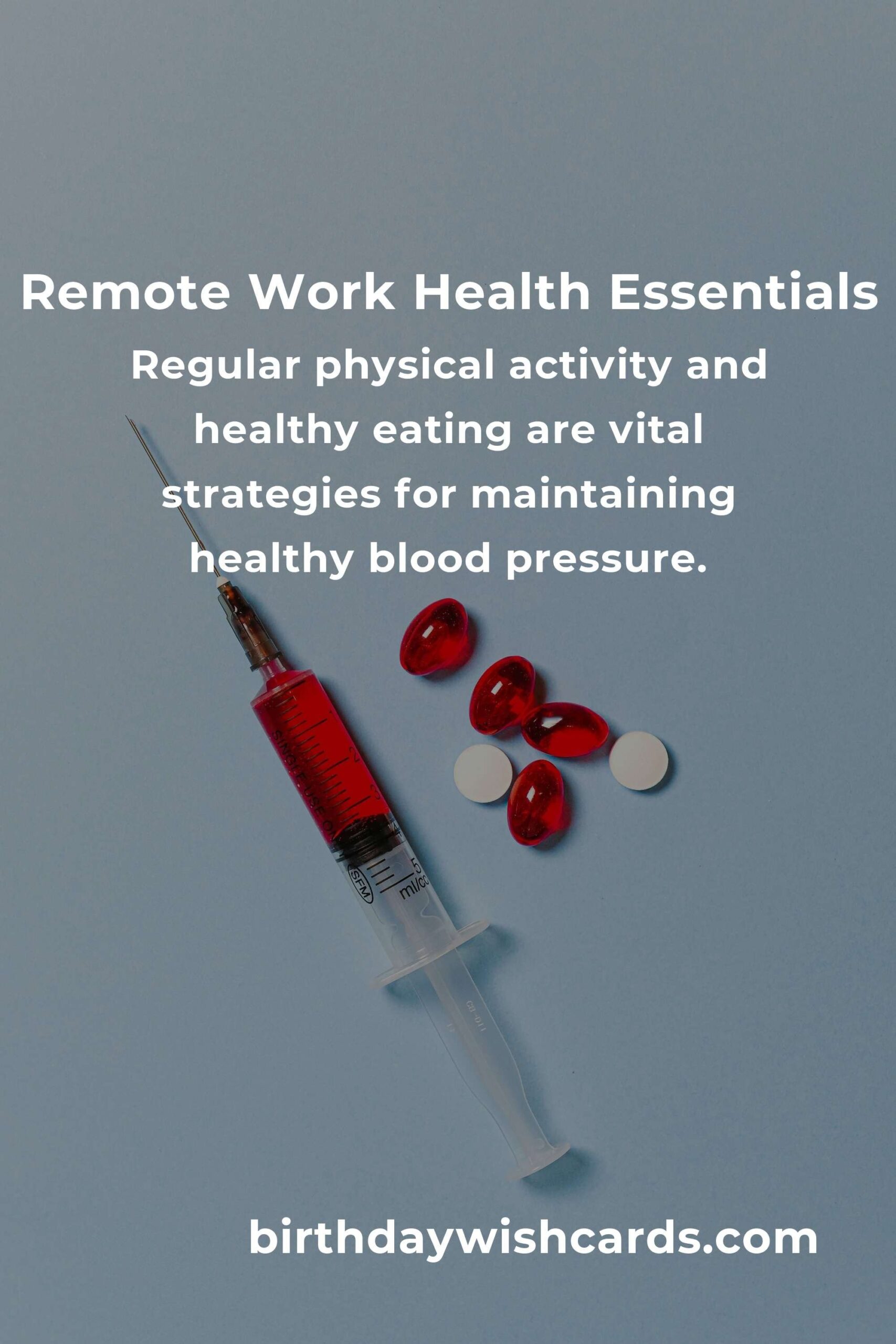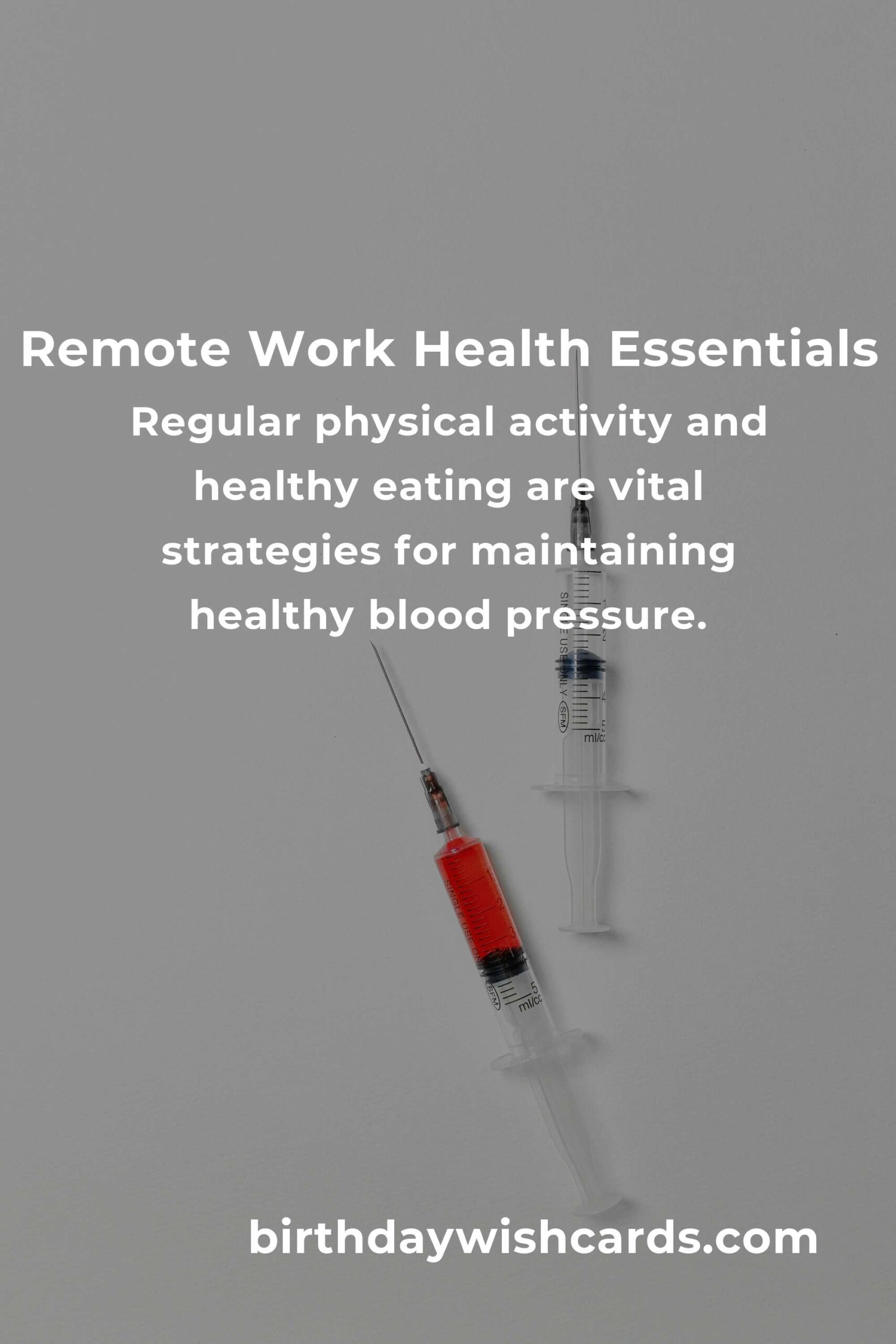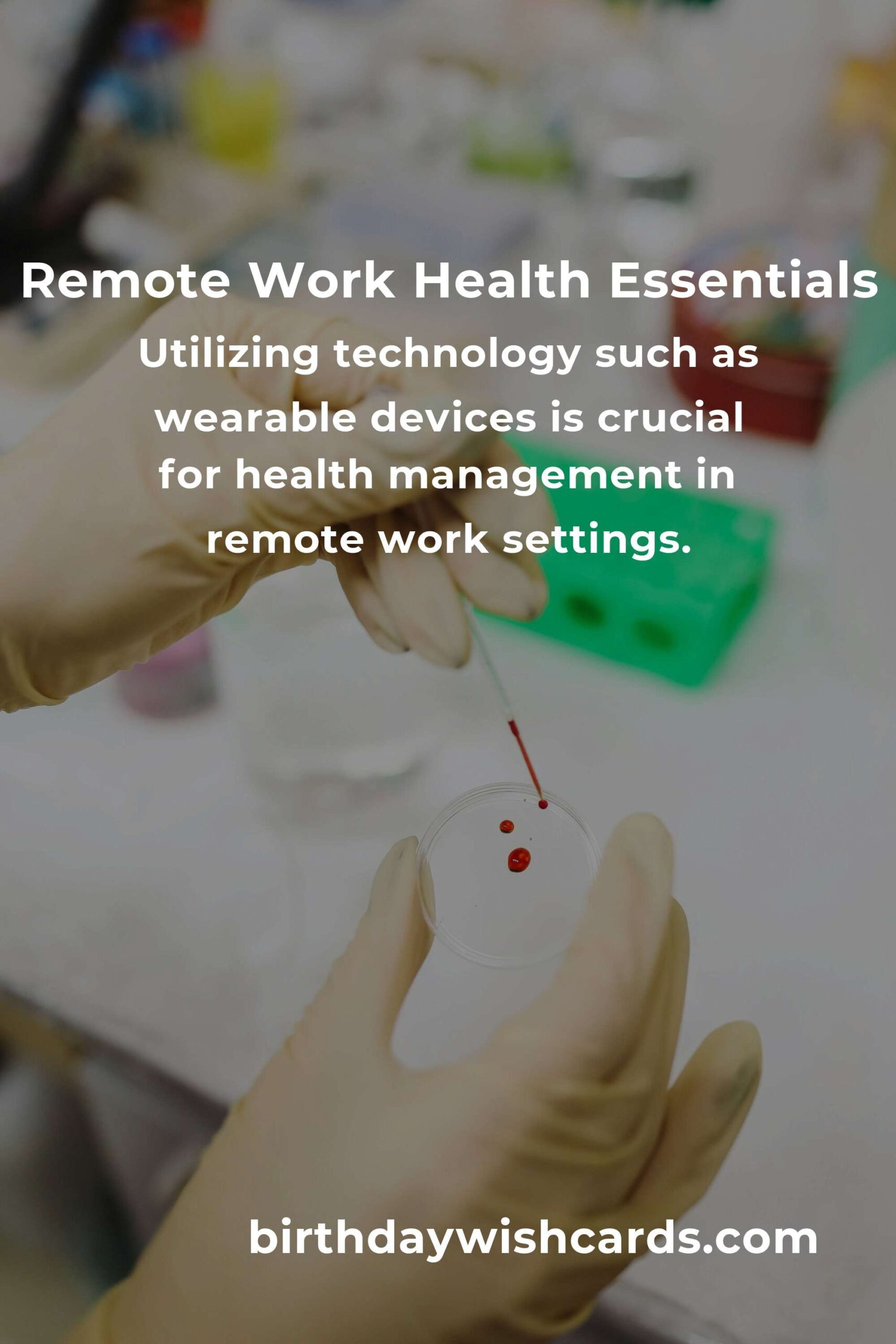
In 2025, remote work has become a norm for many professionals worldwide. While this offers flexibility and convenience, it also brings unique challenges, particularly regarding health. One significant concern is maintaining healthy blood pressure levels while working remotely. This guide aims to provide remote workers with essential information and practical strategies to manage blood pressure effectively.
Understanding Blood Pressure
Blood pressure is the force of your blood pushing against the walls of your arteries. It is measured in millimeters of mercury (mm Hg) and recorded with two numbers: systolic pressure (the pressure when your heart beats) and diastolic pressure (the pressure when your heart rests between beats). Normal blood pressure is typically around 120/80 mm Hg.
Why Remote Workers Need to Monitor Blood Pressure
Remote work, while beneficial, often leads to sedentary lifestyles, poor diet choices, and increased stress. These factors contribute to high blood pressure, also known as hypertension, which can lead to serious health issues such as heart disease, stroke, and kidney problems. Monitoring blood pressure regularly helps in early detection and management of hypertension.
Factors Affecting Blood Pressure in Remote Workers
Sedentary Lifestyle
Remote work often involves long hours sitting in front of a computer, leading to a sedentary lifestyle. Lack of physical activity can cause weight gain and increased blood pressure.
Dietary Habits
Working from home may lead to irregular eating patterns and convenience eating, often high in sodium and unhealthy fats, contributing to high blood pressure.
Stress and Mental Health
The isolation and pressure to perform can increase stress levels, negatively impacting mental health and blood pressure.
Strategies to Maintain Healthy Blood Pressure
Regular Physical Activity
Incorporate regular physical activities like walking, jogging, or yoga into your daily routine. Aim for at least 150 minutes of moderate aerobic activity per week.
Healthy Eating Habits
Adopt a balanced diet rich in fruits, vegetables, whole grains, and lean proteins. Limit sodium intake and avoid processed foods.
Stress Management Techniques
Practice stress-reducing techniques such as meditation, deep breathing exercises, or mindfulness to help manage stress levels.
Regular Monitoring
Use digital blood pressure monitors to check your levels regularly. Keeping a log helps track changes and discuss them with healthcare providers.
Utilizing Technology for Blood Pressure Management
In 2025, technology plays a crucial role in health management. Wearable devices and health apps provide real-time data and personalized insights. Remote workers can leverage these tools to monitor their blood pressure and receive alerts when levels are outside the normal range.
Conclusion
Maintaining healthy blood pressure is crucial for remote workers to ensure long-term well-being and productivity. By understanding the factors affecting blood pressure and implementing strategies to manage it, remote workers can enjoy the benefits of working from home without compromising their health.
In 2025, remote work has become a norm, offering flexibility but also health challenges like maintaining healthy blood pressure.
Blood pressure is the force of blood against artery walls, measured in millimeters of mercury.
Remote work can lead to sedentary lifestyles, poor diet, and stress, contributing to high blood pressure.
Regular physical activity and healthy eating are vital strategies for maintaining healthy blood pressure.
Utilizing technology such as wearable devices is crucial for health management in remote work settings.
#BloodPressure #RemoteWork #HealthGuide #Hypertension #WellBeing

